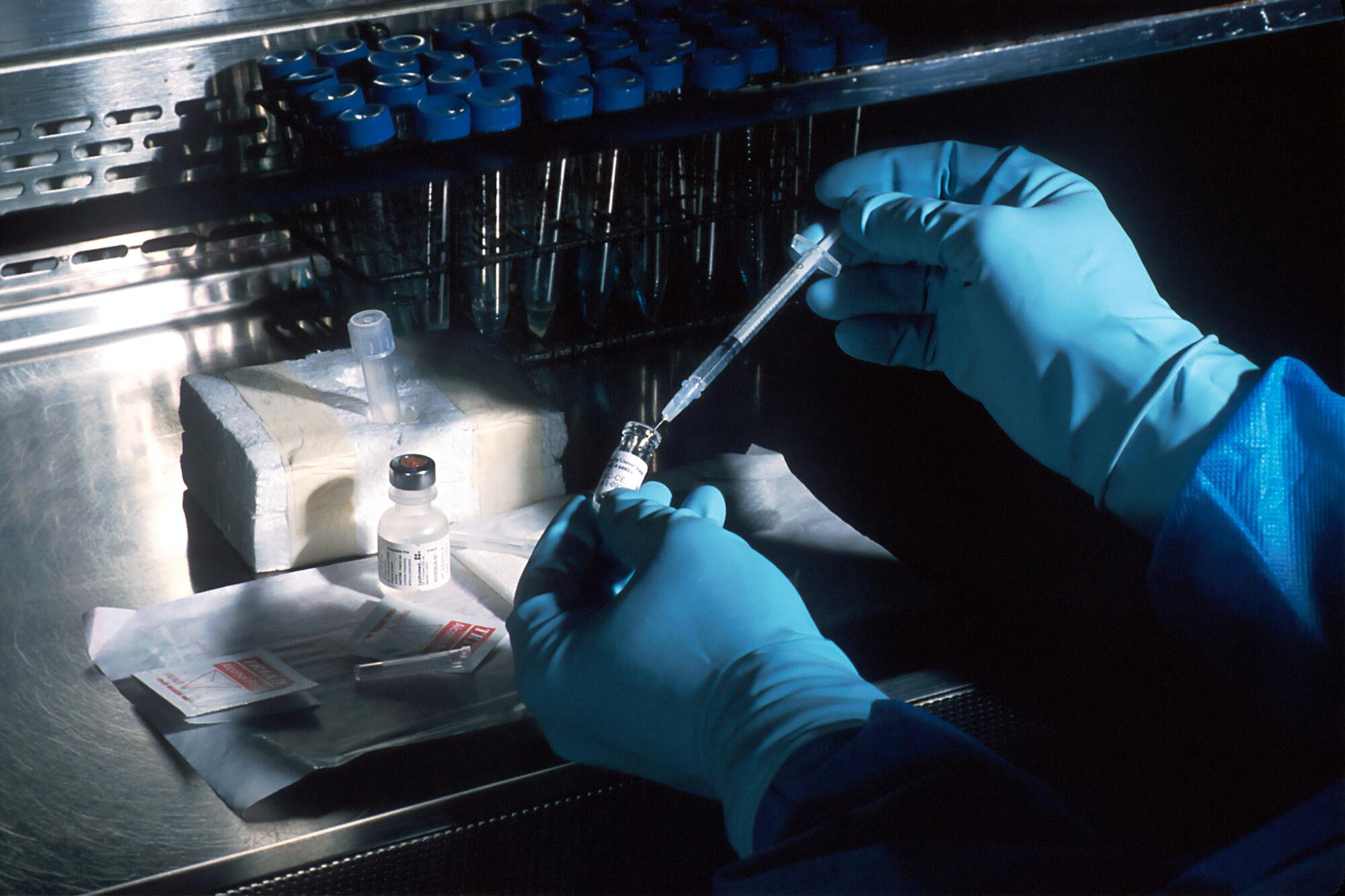In recent years, the idea has spread that laboratories in different countries might be working to create biological weapons that would selectively target only one nation or ethnic group. We checked whether this is possible from a scientific point of view.
Similar concerns have been raised at various times. In 2017, Igor Nikulin, a former member of the UN Commission on Biological Weapons, reported, that “Americans are interested in Europeans of the Slavic group, that is, Russians.” Even earlier, in 2014, information about the prospects for the development of genetically focused weapons spread in the press. Described it goes like this: “This weapon will have the ability to instantly destroy an entire race. The filling embedded in the genetic bomb will determine one or another genetic type of a person and fatally infect the immune system of those who are planned to be destroyed. For those against whom these weapons are not directed, they have a much lesser effect or no effect at all.” In 2022, concern that the development of such weapons is being carried out in biological laboratories on the territory of Ukraine was expressed by Oleg, a deputy of the State Duma of the Russian Federation from the United Russia party Golikov, Chief of the Radiation, Chemical and Biological Defense Troops of the RF Armed Forces Igor Kirillov, former US Army officer posing as a counter-terrorism expert, Scott Bennett.
To understand whether a weapon with this operating principle is possible, you must first understand what DNA is and whether it can be used to reliably determine the nationality of the carrier.
DNA (deoxyribonucleic acid) is a macromolecule that ensures storage, transmission from generation to generation and implementation of the genetic program for the development and functioning of living organisms. To put it extremely simply, DNA can be called the instructions for assembling an organism. Since the 1940s, scientists around the world work to decipher DNA, in 1990 the global Human Genome Project was launched, with the goal of complete sequencing (determination of the sequence) of human DNA; in 2003, the complete human genome was published. It is important to note that sequencing alone does not provide comprehensive answers to the questions of what a particular gene is responsible for. Work in this area is still ongoing.
DNA contains a variety of information about a person: his predisposition to diseases, external form, propensity for certain harmful habits. Moreover, unlike the passports of some states, DNA does not contain information about nationality. Nationality and ethnicity are sociocultural concepts that are not encoded in any section of DNA. The genome contains completely different information - the genotype, based on the similarity of which different individuals form a haplogroup, that is, a set of organisms that have a common ancestor, from whom they all inherited the same mutation. Determining haplogroups is an important part of sciences such as population genetics and genetic genealogy. It is on the basis of the principle of haplogroups work popular genetic tests that promise to determine where you really come from and what nationality your ancestors were. Moreover, the accuracy of such tests from a scientific point of view small. Haplogroups are indeed represented with different frequencies in different nationalities, but no one haplogroup indicates any one nationality with one hundred percent probability.
For example, one of the most common haplogroups among the Slavs is R1a. Its representatives make up up to 63% of the total population of some Central European regions of Russia, and on average among people of Russian nationality it meets in 48% of cases. However, it would be a mistake to call the R1a group exclusively Slavic: with a frequency of 63.5% it is found in Kyrgyz, 56.4% — Poles, 54% — Ukrainians, 51% — Belarusians, 48% - castes brahmins in India, 44.8% - Pashtuns (southwest Afghanistan and northwest Pakistan). A biological weapon targeting the R1a group would affect a huge number of nationalities with varying degrees of damage. They would only remain on the sidelines Andalusians, Arabs from several North African countries, Basque, Albanians, Altaians, Egyptians and some others. Other haplogroups are less represented in the Russian population - with a frequency of 20% to 1%. Moreover, each group is also represented in other nationalities. Thus, the maximum “pointing” accuracy of such weapons, even in theory, does not exceed 50%. Doctor of Biological Sciences, bioinformatician Mikhail Gelfand explains: “It is probably possible to create—very expensive and very difficult—weapons against some very small ethnic group that has not mixed with anyone for the last thousand years. Russians are not such an ethnic group. It is probably possible, after spending crazy amounts of money, to figure out how to exterminate the inhabitants of the so-called Andaman Islands. But there are easier ways to do this.”
Moreover, some populations initially have a mutation that makes them more or less vulnerable to some external factors. So, 2–4% of Northern Europeans immune to the human immunodeficiency virus, up to 40% of Central Africans are genetically predisposed to the development of sickle cell anemia, while being resistant to malaria, and about 70% of Chinese have genetically determined lactose intolerance. So today milk can be considered the most effective ethnic weapon.

In addition to the problem of “aiming” such weapons, an equally important factor is their packaging. The most promising way to interfere with DNA today seems RNA interference. There is hope that in the future humanity will learn to use this method to treat rheumatoid arthritis and a number of hereditary diseases retina of the eye. The principle of operation is to deliver microRNAs and interfering RNAs into the body, trained in laboratory conditions to interact with a certain section of messenger RNA, which is necessary when reading the instructions of our body - DNA. True, for microRNA to work as required, it must be delivered to the body in significant quantities, preferably directly to the target organ. Mixing it into water, spraying it from the air or adding it to food will not achieve the desired effect. The required concentration in the body of worms as part of the experiments achieved only by soaking the body in concentrate, and even then this method does not always work.
Moreover, even if it is possible to solve the problem of delivering the necessary molecule inside the body in the required concentration, then such weapons will face the problem of synchronous operation. Scientists with some success edit one section of the genome at a time; in a Chinese experiment on mice, to complete the tasks it was necessary to edit eight sections, the effectiveness of one-step editing amounted to only 2 to 155, that is, just over 1%.
Finally, our body has its own “repair” mechanisms - DNA repair systems. They make sure that the newly reproduced elements correspond to the instructions, that is, DNA. When an error is detected, the “wrong” cells are destroyed with a high degree of precision. This process, on the one hand, provides we have some protection, for example, from cancer, on the other hand, it makes gene therapy carried out using the CRISPR/Cas method less effective (a development that opens up prospects for treatment HIV infection, some species cancer, cystic fibrosis, Duchenne muscular dystrophy, rheumatic diseases).
Thus, the development of biological weapons that would select a specific nation with a high degree of accuracy and effectively influence it is currently unrealistic even at a theoretical level. The “ethnic bomb” will not be highly accurate; moreover, there is no effective way to deliver the necessary substances to the body. And also, a way to suppress the natural destruction of the consequences of such intervention, that is, the mechanism inherent in us by evolution, has not been developed.

Not true
Read on the topic:
- Are biological weapons against a specific ethnic group complete nonsense?
- From a gun by genes: what’s wrong with “ethnically oriented” weapons
If you find a spelling or grammatical error, please let us know by highlighting the error text and clicking Ctrl+Enter.






